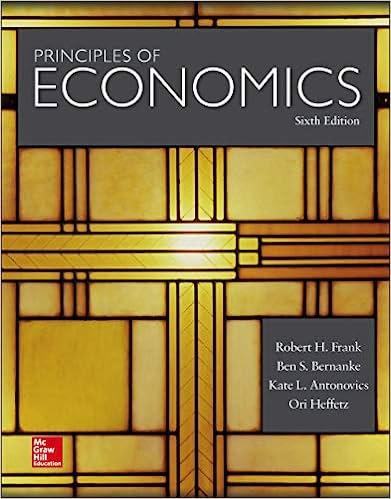Question
Adams and Brash own lots A and B, respectively, of Section 210, bordering on State Route 11.The Adams lot (210A) is adjacent to the state
Adams and Brash own lots A and B, respectively, of Section 210, bordering on State Route 11.The Adams lot (210A) is adjacent to the state road and the Brash lot (210B) is immediately behind it.Access to 210B is provided for in an easement under which the owner of 210A must allow free passage to occupants of all inned lots. Adams already has a house on lot A and has resided there for five years.Upon construction of the house, Adams also caused a road to be prepared, running from Route 11 to the back border of his lot.The road is not hard-surfaced, but is a type of "oiled gravel" surface common to private roads and driveways in rural areas.This kind of surface is subject to erosion and general deterioration over time.However, Pitts Gravel will come and provide any number of "doses" of road repair at a price of $25 per dose. [The concept of a "dose" of an input is a pedagogical simplification that will be utilized a number of times below.It is used to collapse a heterogeneous, multidimensional package of possible adjustments to a single dimension.Hence "road repair" could be a mix of many different services in varying proportions, but no useful purpose is served by explicitly considering multidimensional adjustments.Through the simplification of road repaid into "dose" we can focus on a straightforward quantitative adjustment] *Note: the cost of each individual dose is $25 (i.e., "marginal cost"), so 2 doses would cost in total $50, 3 doses cost $75, etc. Fortunately, we just happen to be in possession of Adams' true subjective evaluations of how much different levels of road repair are "worth" to him.Column 2 of the Table below shows his total value of the services received from the road, assuming different levels of maintenance, i.e., different quantities of doses.Note that these values are "gross" of any costs incurred in purchasing the maintenance. 1.How much road repair will be purchased? Use the concept of Nash equilibrium to make this prediction.Is the equilibrium efficient?Briefly explain why or why not. 2.What if more people enter the scene, Cherkas, Donatella, Eglin, all with the same preferences as Adams and Brash. Is it any more likely the efficient solution will be reached with more people involved? What would be the likely outcome?Explain. 3. In what sense might the parties prefer to be "coerced" to contribute, such as through a contractual agreement committing to a pre determined contribution to road repair, or government collecting taxes which it uses to maintain the road?Explain specifically how everyone can be made better off through being forced to contribute to repairs through a contract or taxes (i.e., a Pareto Improvement). 4. Is there a market failure in the provision of road repairs, i.e. a defect in the property rights (ownership) of the road? What characteristic of the ownership of the road lead to the problem? 5. Suppose Adams was the sole owner of the road and could charge Brash for use of the road.Would this lead to the efficient level of road repair?Explain.

Step by Step Solution
There are 3 Steps involved in it
Step: 1

Get Instant Access to Expert-Tailored Solutions
See step-by-step solutions with expert insights and AI powered tools for academic success
Step: 2

Step: 3

Ace Your Homework with AI
Get the answers you need in no time with our AI-driven, step-by-step assistance
Get Started


